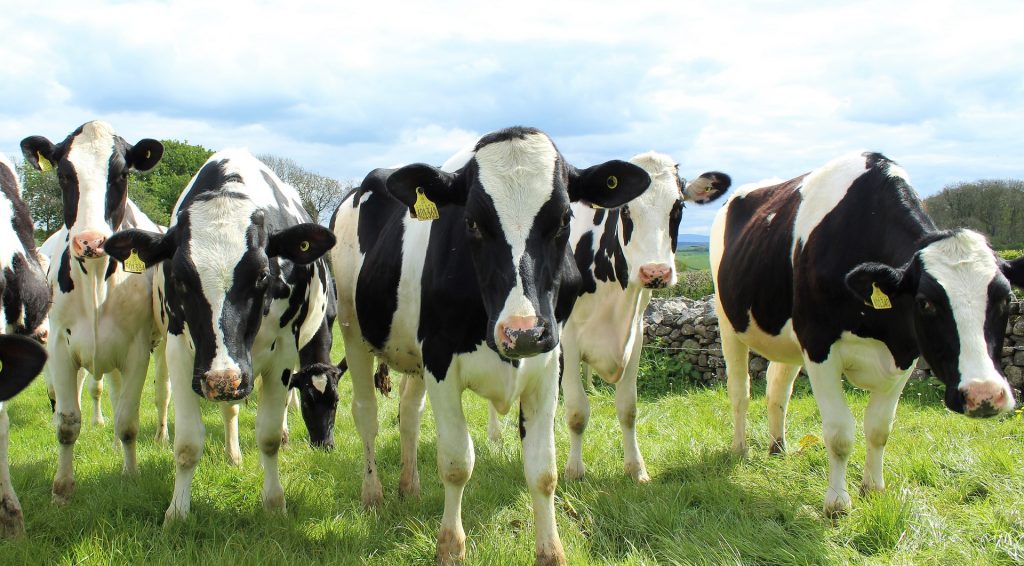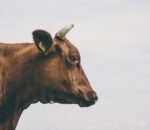Dry cow treatment/management is an integral part of dairy herd management. It is a very decisive duration of animal care that affects the calf’s survival, milk production, and occurrence of health problems in the next coming lactation. We will also be discussing “do cows always produce milk” in the context of the lactation period and dry period of cows. In this article, we will discuss, why it is important and how we can ensure proper dry cow treatment and care.
What is dry cow and dry period?
The life duration of a dairy cow from the end of lactation or the stop of milk production up to the date of parturition is called the dry period. During this period of life, the cow stops producing milk. A cow going through the dry period is called a dry cow. The dry period is divided into two parts:
- Far Off Period
- Close-Up Period (3 weeks before the date of calving)
How to dry up a dairy cow?
We use two types of methods or strategies for drying off cows.
- Abrupt dry off
- Intermittent dry off
During the early few weeks of the dry period, animals are at greater risk to develop mastitis. Animals are more exposed to environmental pathogens because the keratin plugs of teats are not fully developed. Also, the residual milk in the udder favors the proliferation of bacteria which leads to mastitis.
During animal drying-off, the goal is to seal the teat holes and abruptly stop milk production. All low milk-yielding animals should be dried off abruptly, as it reduces stress and makes the management of animals easy.
In the case of high-yielding animals, a gradual decrease in milk production is necessary before the final dry-off. Decreasing milk production close to the start of the dry period is helpful to reduce the risk of mastitis development. Decreased milk production can be achieved by lowering dry matter intake, reducing the number of concentrates in feed, and offering low energy diet.
Intermittent dry-off involves the lengthening of the milking intervals and simply discontinuing the milking process. This strategy is not recommended as it enhances the risk of mastitis.

Do cows always produce milk?
Cows start producing milk after their first parturition. After each parturition, cows have a lactation period of 8-12 months. At the end of each lactation, we provide them with a dry period of about 2 months. So, cows do not always produce milk, instead, they produce milk only during their lactation periods. The optimum duration of the dry period is about 50 to 60 days for dairy cows. A cow that is not provided with a dry period usually shows a decline of 25 % in milk production in the next lactation. Short dry periods also affect milk production and lead to metabolic conditions in dairy cows. Extended dry periods of 70 or more days are not economical because they increase feed and management costs.
Keys to successful dry cow treatment
- The optimum length of the dry period
- Dry cow therapy
- Nutrition
- Housing
- Body condition score
Dry Cow Therapy
Dry cow therapy is the use of suitable management techniques and antibiotics for a dry cow. A dry period with dry cow therapy is essential for the following reasons.
- Helps the animal to regain his body condition score.
- It allows the use of nutrients for fetal growth.
- It provides rest to milk-producing organs (mammary glands to repair).
- It helps to avoid mastitis (inflammation of the udder).
1. Dry cow mastitis treatment
Dry cow mastitis treatment is very essential during the first three weeks after drying off. During these weeks, physiological changes occur in the udder, and the flushing out of pathogens from the streak canal is stopped because the milking process is ended. It makes the udder more prone to mastitis. Dry cow mastitis treatment helps to eliminate the already present infections and also minimizes the risks of new infections of the udder. A long-acting intra-mammary antibiotic infusion should be used as a dry cow therapy.
2. Nutrition for the dry period
Nutrition is very crucial for maintaining the body condition score of cows and the health of the growing fetuses during the dry period. The ultimate objective of nutrition in the dry period is to optimize the milk yield and maintain the cow’s health for the next lactation. This nutrition is also important to avoid negative energy imbalance, fatty liver, milk fever, and other associated disorders. Provide minerals and vitamins during this period to compensate for all deficiencies of the production cycle. Nutrition should be provided in two groups as far off and close-up cows. Diets of close-up animals should contain more energy and protein than far-off cows. Diets of close-up animals should be just like lactating animals and it must include 13-14 % of crude protein on a dry matter basis. Offer diets with low potassium levels to close up cows as it helps to prevent milk fever after calving. Also, avoid a high calcium diet for close-up cows because due to negative feedback mechanisms, hinders the release of calcium from natural body reserves which leads to milk fever.
3. The housing of a dry cow
Proper housing is also very necessary to avoid stressful conditions for animals. Animals of far-off and close-up groups are kept in separate places so separate housing is required. Good housing helps to minimize heat stress for animals by providing shade and sprinkles.
4. Body Condition Score (BCS)
If at the start of the dry period, an animal has a body condition score (BCS) of 3.5 on a scale of 1 to 5, then we will only maintain it till the calving day. But if the animal has a BCS of less than 3.5, then we will try to compensate for the condition by offering a nutrient-dense diet. However, if the animal dried off with a BCS of more than 3.5, it is desirable to maintain this obese condition rather than trying to reduce the condition.
Imran Ullah Vet Blog is also providing sufficient knowledge regarding dairy animals and other veterinary topics. Check it out once, and you will love it.


